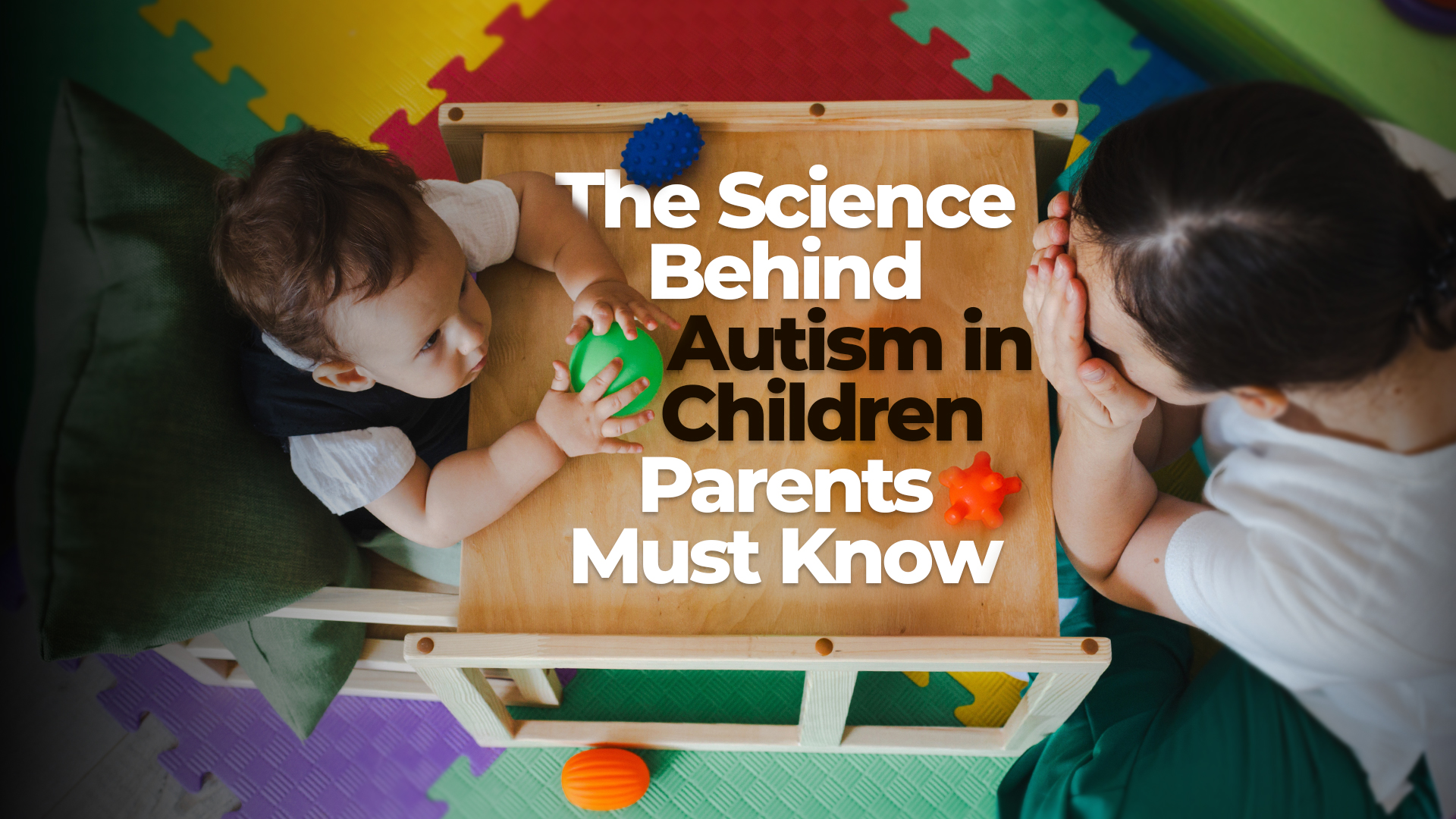3 questions to think about regarding autism in children:
- When your child avoids eye contact or prefers playing alone, do you see it as shyness, or could it be something more?
- If your child repeats words or motions over and over, have you ever wondered why their brain processes the world differently?
- Do you believe that early intervention and understanding can unlock incredible potential in autistic children?
If these questions make you pause and think, you’re not alone. Autism Spectrum Disorder (ASD) is one of the most widely researched yet misunderstood neurodevelopmental conditions. Today, let’s break it down—scientifically and practically—so parents can better understand their child’s unique mind and how to support them.
What is Autism Spectrum Disorder (ASD)?
Autism Spectrum Disorder is not a disease. It’s a different way of experiencing the world. ASD affects how a child communicates, socializes, and interacts with their surroundings. The term “spectrum” means that autism can manifest in many ways—some children may have mild symptoms and communicate well, while others may need lifelong support.
Common traits of autism include:
- Challenges with social interaction and communication.
- Repetitive behaviors or intense focus on specific interests.
- Sensory sensitivities (e.g., being overwhelmed by loud noises or bright lights).
But behind these traits is a brain wired differently—a brain that often sees details others miss, that may excel in logic, creativity, and deep focus.
The Science Behind Autism: How the Brain Works Differently
To truly understand autism, we need to look at how an autistic brain functions.
1. Brain Connectivity & Development
- In autistic children, the brain grows faster than usual in early childhood, particularly in areas controlling emotions and social skills. This overgrowth can make processing emotions and interactions overwhelming.
- Certain areas, like the prefrontal cortex (decision-making) and amygdala (emotions), may function differently, leading to heightened emotional responses or difficulty understanding social cues.
- The brain’s synaptic pruning process (which removes unnecessary neural connections during childhood) happens differently in autistic individuals, leading to overconnectivity in some areas and underconnectivity in others.
2. Genetic & Environmental Factors
- Autism is highly heritable, meaning it runs in families. Over 100 genes have been linked to autism, many of which affect brain development.
- While genetics play a significant role, some environmental factors (such as prenatal exposure to toxins, maternal health conditions, or premature birth) may also contribute.
3. The Role of Neurotransmitters
Autism is linked to imbalances in key brain chemicals:
- Glutamate & GABA
These regulate how the brain processes information. In autism, there may be an imbalance between excitatory (glutamate) and inhibitory (GABA) signals, leading to sensory overload.
- Serotonin
Autistic children often have higher serotonin levels in the blood, which may impact mood, anxiety, and social behavior.
- Dopamine
Differences in the brain’s dopamine system may explain repetitive behaviors and an intense focus on specific interests.
5 Early Signs of Autism in Children
Parents often notice signs of autism before a child turns 2 years old. Here are some common early indicators:
- Limited Eye Contact
Babies usually seek eye contact, but autistic children may avoid it.
- Delayed Speech Development
Some children may not speak at all, while others might echo words without context.
- Unusual Play Patterns
Rather than imaginative play, they may prefer lining up toys or spinning objects.
- Lack of Social Interest
They may not respond to their name, avoid interaction, or struggle with sharing attention (e.g., pointing to an object and looking at a parent for acknowledgment).
- Strong Routine Dependence
Changes in routine can be distressing, and even small disruptions may cause anxiety or meltdowns.
Recognizing these signs early is crucial, as early intervention can significantly improve a child’s ability to communicate and navigate the world.
How Can Parents Support Their Autistic Child?
1. Behavioral & Developmental Therapies
- Applied Behavior Analysis (ABA): Uses structured learning techniques to improve communication and social skills.
- Speech Therapy: Helps children develop verbal and non-verbal communication.
- Occupational Therapy: Focuses on sensory integration and motor skills.
2. Emotional & Social Development
- Social stories (visual or written narratives) help autistic children understand social interactions.
- Encouraging joint attention activities (like looking at an object together) improves engagement.
3. Managing Sensory Sensitivities
- Identify sensory triggers (e.g., bright lights, loud noises) and create comfortable environments.
- Provide sensory-friendly tools, such as noise-canceling headphones or weighted blankets.
4. Alternative Therapies & Emerging Research
- Transcranial Magnetic Stimulation (TMS): Research suggests it may help improve social skills in autistic individuals.
- Gut-Brain Connection: Some studies indicate that gut microbiome imbalances may contribute to ASD symptoms. Diet and probiotics are being explored as possible interventions.
Raising an Autistic Child: The Emotional Side
Raising a child with autism can be challenging, but it is also deeply rewarding. These children see the world differently, often with incredible honesty, focus, and unique creativity.
As a parent, it’s important to shift from “fixing” to understanding. Autism is not a flaw—it’s a different way of being. By providing love, patience, and the right support, you can help your child thrive.
8 Practical Tips for Parents
Here are some simple yet effective ways to support your autistic child every day:
✅ Observe, don’t assume – Every child with autism is unique; learn what works best for yours.
✅ their interests – Their passions can be a gateway to learning and connection.
✅ Use visual schedules – Predictability reduces anxiety and makes transitions easier.
✅ Give them space when needed – Overstimulation can be overwhelming, and breaks are necessary.
✅ Encourage social interactions in small steps – Start with one-on-one playdates before larger groups.
✅ Celebrate small wins – Progress, no matter how minor, is still progress.
✅ Educate family members – Help relatives understand and support your child’s needs.
✅ Take care of yourself too – Parenting a child with autism can be demanding; self-care is essential.
Final Thoughts
Autism is not a limitation—it’s a different way of thinking, perceiving, and interacting with the world. When parents, educators, and society create an environment of acceptance and support, autistic children can achieve incredible things.
Today, on World Autism Awareness Day, let’s commit to understanding, embracing, and empowering every autistic child, because their potential is limitless when given the right opportunities.
Drop them in the comments or share this with someone who needs it!
Reach Dr. Chandni’s support team at +918800006786 and book an appointment.









